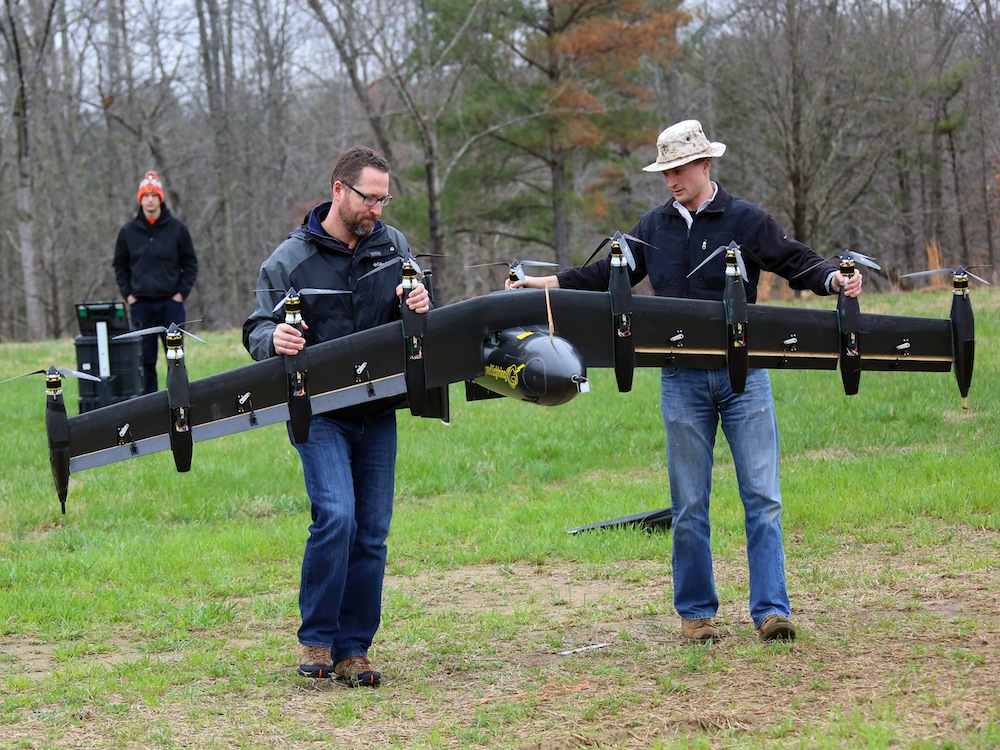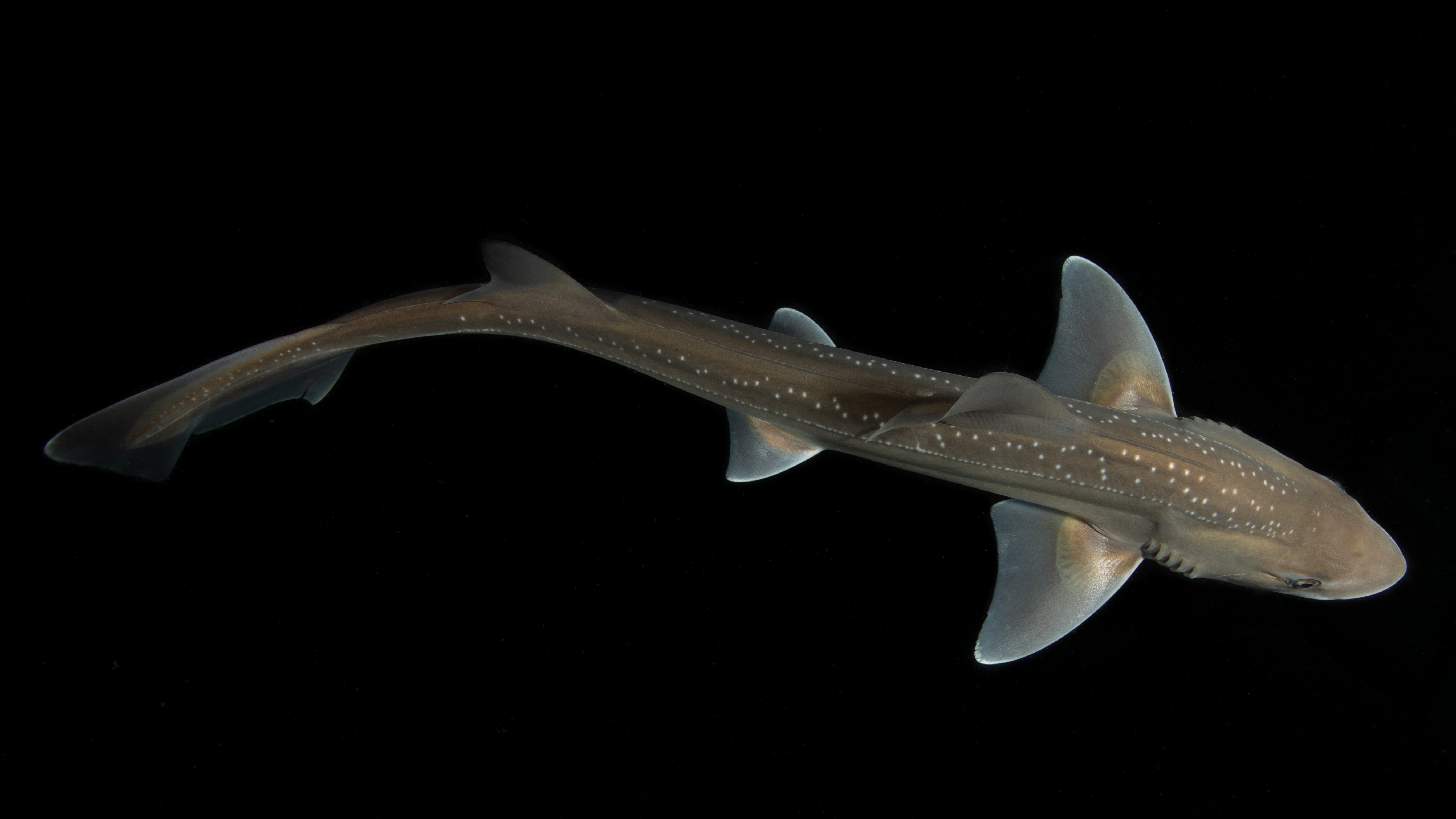Greased Lightning! NASA Drone Advances Unmanned Craft

A huge, 10-engine drone dubbed "Greased Lightning" successfully completed a series of flight tests recently, paving the way for new types of unmanned vehicles that could one day carry people.
Earlier this spring, NASA engineers flew the so-called GL-10 (the "GL" stands for "Greased Lightning") prototype drone at a military base located about two hours away from the agency's Langley Research Center in Virginia.
GL-10 has a 10-foot-long (3 meters) wingspan and 10 engines: eight on the wings and two on the tail. The 62-lb. (28 kilograms) drone can take off vertically like a helicopter, but in the air it flies more like an airplane. Future versions of the drone could be used for a variety of applications, the researchers said. [5 Surprising Ways Drones Could Be Used in the Future]
"It could be used for small package delivery or vertical takeoff and landing, [and] long-endurance surveillance for agriculture, mapping and other applications," Bill Fredericks, an aerospace engineer at the Langley Research Center, said in a statement. "A scaled-up version — much larger than what we are testing now — would make also a great one- to four-person-size personal air vehicle."

Over the course of five flight tests, the drone was able to take off and hover like a helicopter, before demonstrating that it can also fly like a conventional airplane. Now, the researchers are examining ways to make the drone more aerodynamically efficient, Fredericks said.
The GL-10 drone is the latest in a series of prototypes used to develop the concept. Engineers at the Langley Research Center built 12 prototypes, ranging in size from 5 lbs. (2.3 kg) to 55 lbs. (25 kg), with each successive version getting closer to a real aircraft's weight and design.
"Each prototype helped us answer technical questions while keeping costs down," aerospace engineer David North said in a statement. "We did lose some of the early prototypes to 'hard landings' as we learned how to configure the flight-control system. But we discovered something from each loss and were able to keep moving forward."
Sign up for the Live Science daily newsletter now
Get the world’s most fascinating discoveries delivered straight to your inbox.
In addition to being able to take off in tight places, the GL-10 is a quiet flier because its engines are battery-powered. NASA describes the drone as quieter than a neighbor using a gas-powered-motor lawn mower in the yard next door.
NASA engineers will continue to tweak the design of the GL-10 drone, according to agency officials, and earlier this month, the prototype was displayed at the Association for Unmanned Vehicles Systems International's 2015 conference, in Atlanta.
Agency officials did not say when they expect the drone could be ready for use in the field.
Follow Live Science @livescience, Facebook & Google+. Original article on Live Science.

Elizabeth Howell was staff reporter at Space.com between 2022 and 2024 and a regular contributor to Live Science and Space.com between 2012 and 2022. Elizabeth's reporting includes multiple exclusives with the White House, speaking several times with the International Space Station, witnessing five human spaceflight launches on two continents, flying parabolic, working inside a spacesuit, and participating in a simulated Mars mission. Her latest book, "Why Am I Taller?" (ECW Press, 2022) is co-written with astronaut Dave Williams.
James Webb Space Telescope finds a wild black hole growth spurt in galaxies at 'cosmic noon'
'Rabbits sometimes make mistakes or grow lazy. That's when the tortoise seizes its chance': Chinese scientists make nuclear power breakthrough using abandoned US research
What is 'induced atmospheric vibration' and did it really cause power outages across Spain and Portugal?









